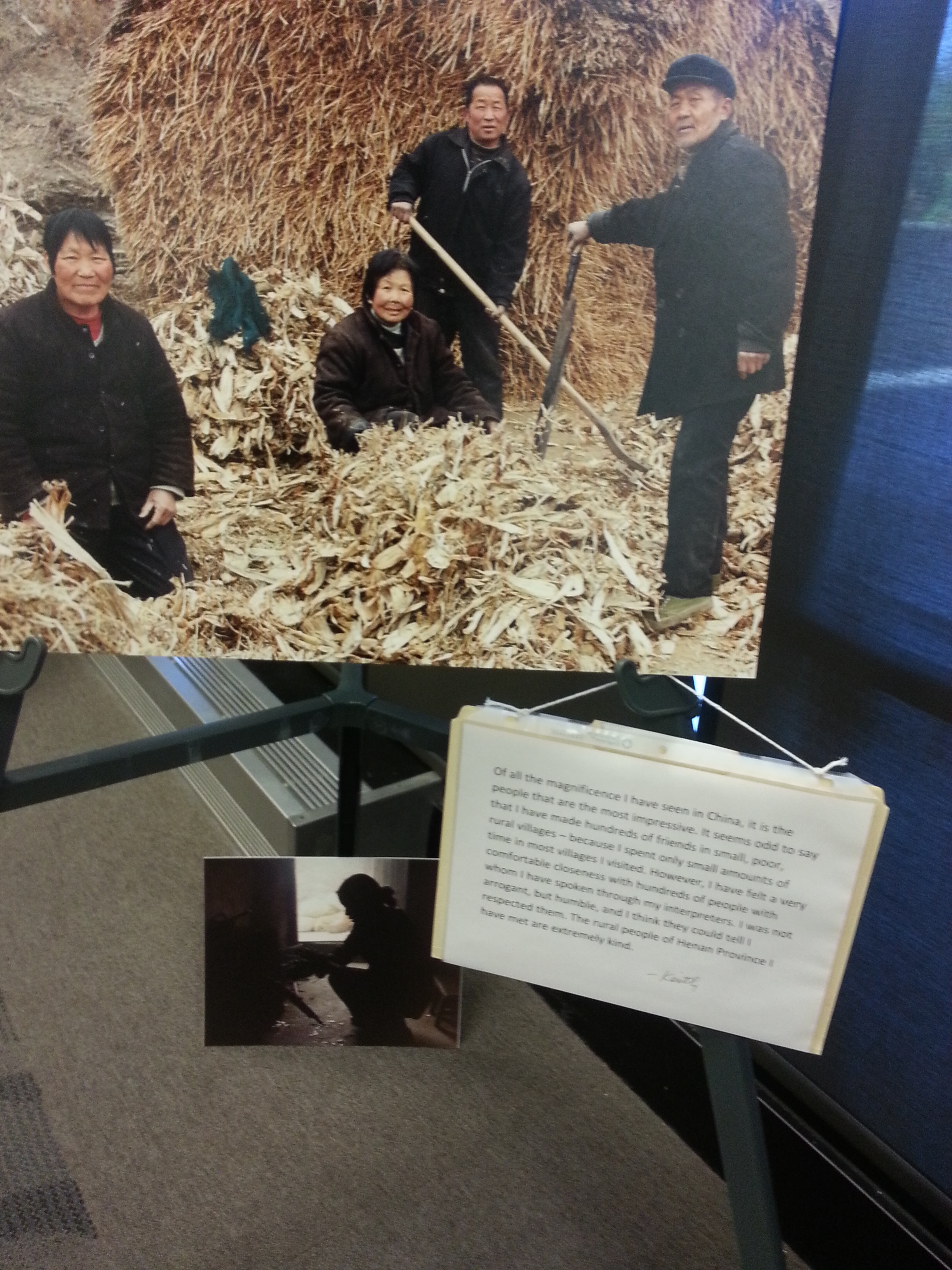Photographs of rural life in China on exhibit in FHSU's Memorial Union

09/30/14
Dr. Keith Campbell's photography of rural China is currently on display to the public in Fort Hays State University's Memorial Union, in the Stouffer Lounge, until Wednesday, Oct. 8. The photographs take observers through Campbell's journey during his research on social change in rural China. Campbell is a professor of sociology at FHSU.
Campbell's photos reflect both welcome and hostility from villagers. Some called the police, assuming he was trying to convert people's religious beliefs; some government representatives were hostile; and one angry woman accused him of documenting only negative aspects of China. However, Campbell has been welcomed graciously into many parts of China.
"I am interested in photographically preserving images, the subjects of which will be gone in the near future," said Campbell. "Thus, I focus on the older parts of China's villages."
The parts of China his photos capture are similar to Kansas in weather, the lay of the land, the rolling hills and farming, said Campbell.
The most remote village Campbell visited with his colleague and translator, Fu Runfeng "Howard," no longer exists. The village, Yang Jia Man, was located on a mountain, which the Beijing government decided to make a national park. Campbell and Howard spent three years interviewing residents and forming relationships before the residents were forced to leave.
Some photos focus on the hands of Campbell's friends in Yang Jia Man. He thought of this idea during one of the 32-hour trips from Hays to Xinzheng.
"The idea of the importance of our hands crossed my mind -- the idea that the way we use our hands expresses a part of our identity," said Campbell.
Since 1999, Campbell has traveled to China 22 times to teach at Sias International University in Xinzheng, Zhengzhou. It is the 15-mile radius around the university that Campbell has researched. For the first three years, Campbell rode a bicycle to the villages but later hired a driver to take him to more distant locations.
The photographs in the exhibit are from film using three Nikon FM-2 cameras.
"Passing though airports with 20 rolls of 36 exposure film that I did not want X-rayed was always a challenge," said Campbell.